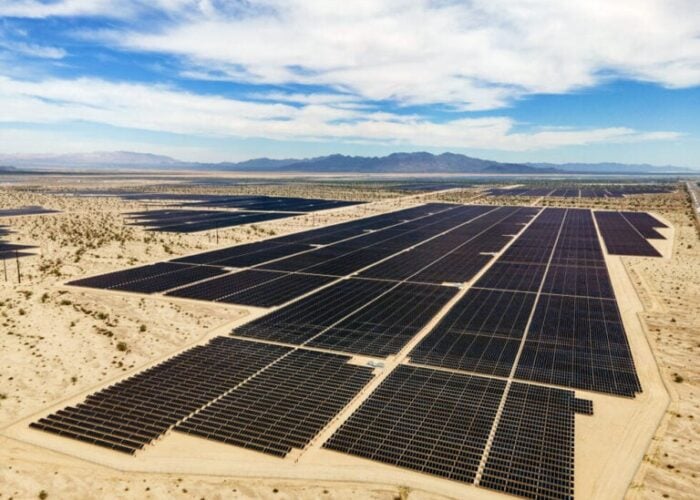TÜV Rheinland has revealed its latest measurement testing in the form of a measurement system for spectral sensitivity and quantum efficiency of PV modules for crystalline and thin-film module manufacturers. The group has established a new spectral measuring station at its solar test center in Cologne, which can measure PV modules with an edge length up to 200cm. The measurement testing, conducted in wavelengths that range from 300 to 1,200 nanometers, is performed in increments of one nanometer. TÜV Rheinland points out that the testing is non-destructive since the modules can be connected to the terminals without interfering with the solar cell circuitry.
“Manufacturers use these measurement results during development in particular, in order to optimize the design of solar modules,” stated Jörg Althaus, head of the photovoltaic modules qualification division at TÜV Rheinland. The spectral measuring station is aimed to enhance the accuracy of power measurements for PV modules, particularly in the thin-film segment. A measurement area of 5cm x 5cm of the module surface is said to be able to be freely selected allowing the study of irregularities of spectral sensitivity. The group notes that stacked and multi-junction cells can also be tested with their new measurement station.
Try Premium for just $1
- Full premium access for the first month at only $1
- Converts to an annual rate after 30 days unless cancelled
- Cancel anytime during the trial period
Premium Benefits
- Expert industry analysis and interviews
- Digital access to PV Tech Power journal
- Exclusive event discounts
Or get the full Premium subscription right away
Or continue reading this article for free
TÜV Rheinland credits the Japanese National Institute of Advanced Industrial Science and Technology as the creator of the spectral measuring station with the installation of the system co-sponsored by the German Federal Ministry for the Environment. TÜV Rheinland stated that the data collected from the measurement system would help it reach a higher-calibration for crystalline PV modules, while bringing down the overall occurrence of measurement uncertainties during testing from +/- 2.5% to around +/- 2%.
TÜV Rheinland plans to present the test stand and its new service at Intersolar Europe June 8 through June 10 in Munich.






